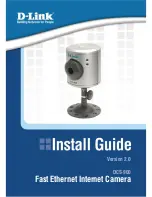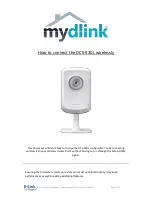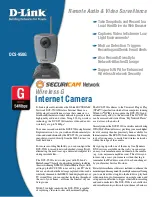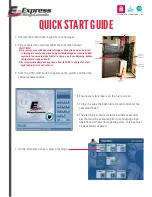
VOT1; Rev 1.5; EN; 5.11.2015
TKT66
– Installation and maintenance
11
4.5 Control unit
The monitoring function of the central battery unit can operate using three different operating principles:
addressable monitoring, circuit monitoring or a combination of both. This is selected with the DIP switch
4 (see more information in Chapter
5.2.3 DIP switch settings in circuit boards)
. Addressable monitoring
and circuit monitoring can be set for different circuit boards within the same unit: 8 circuits on
addressable monitoring, 8 circuits on circuit monitoring, etc.
In addressable monitoring of the luminaires, each luminaire has its own unique address.
There can be
1...32 luminaires in one circuit. The luminaires have LOW 1-16 (luminaires 1-16) and HIGH 1-16
(luminaires 17-32) addresses. For example, the luminaire HIGH 2 indicates luminaire number 18. On
the display of the central battery unit this is presented with the letters
L
(LOW) or
H
(HIGH). The central
battery unit checks the operation and indicates the result for each luminaire separately.
The circuit monitoring measures the current of a circuit in battery mode. The changes in the current are
used to determine possible faults in the circuit. The number of luminaires in a circuit is not limited, but
the input power of a circuit cannot exceed 350 VA or 1,6 A. Note t
hat circuit monitoring doesn’t give
luminaire-specific information. The limit value of the error alarm can be changed in the settings, (1-31) =
+/- 10.. 310 mA. The factory settings are 16 = +/- 160 mA.
NOTE:
In parallel connection, the current values are multiplied by the number of the parallel connected
circuits. 700 W = 2x or 1400 W = 4x.
NOTE:
If circuit monitoring current limits are changed in a configured centre, the unit goes into a non-
configured state and must be re-configured.
The descriptions of the signal LEDs and the buttons are presented in chapters
monitoring LED’s and menu settings
4.5.1 Individual luminaire monitoring test with basic settings
As a basic setting, the luminaire test is done automatically once a day at a predetermined time. The
central battery unit carries out the test as follows:
The central battery unit switches to battery mode and the
Battery Oper
. and the
Luminaire Test
LEDs are
lit for the duration of the test. L or H and the circuit number is displayed on the display of the control unit.
Whenever a functioning luminaire is detected, an indicator light is lit. After all circuits are tested, the
system returns to normal mode.
If a malfunctioning luminaire is found from any circuit, an indicator light will blink on the display. Also, the
External fault
LED is lit and the external error alarm relay will operate. In correctly functioning luminaires
the LEDs are lit evenly.
For more information about testing the luminaires, see Chapter
4.10 Control Module panel test functions
4.5.2 Circuit monitoring luminaire test with basic settings
As a basic setting, the luminaire test is done automatically once a day at a predetermined time. The
central battery unit carries out the test as follows:
The central battery unit switches to battery mode and the
Luminaire test
LED
is lit for the duration of the
test. The current of each circuit is measured and the circuit number increases as the test progresses.
The LEDs representing the measured relative current of each circuit will be lit. After all circuits have
been tested, the software returns to normal mode.
A fault indication will be given if in any of the circuits the measured current differs more than +/- 80 mA
when compared to the value which was stored during the last configuring. Each one LED in the column
represents a +/- 100 mA of current in a circuit. The deviation against the configured value is shown by
flashing the LEDs corresponding the difference. The more LEDs there are flashing, the bigger is the
difference and more luminaires are likely to be failed. With the settings the current range can be
changed between 10 and 310 mA. The displays of the LEDs also operate in within this range. Also, in
Summary of Contents for TKT66
Page 40: ...VOT1 Rev 1 5 EN 5 11 2015 TKT66 Installation and maintenance 40 TKT66 P...
Page 43: ...VOT1 Rev 1 5 EN 5 11 2015 TKT66 Installation and maintenance 43...
Page 44: ...VOT1 Rev 1 5 EN 5 11 2015 TKT66 Installation and maintenance 44...
Page 45: ...VOT1 Rev 1 5 EN 5 11 2015 TKT66 Installation and maintenance 45...
Page 46: ...VOT1 Rev 1 5 EN 5 11 2015 TKT66 Installation and maintenance 46...
Page 47: ...VOT1 Rev 1 5 EN 5 11 2015 TKT66 Installation and maintenance 47...
Page 48: ...VOT1 Rev 1 5 EN 5 11 2015 TKT66 Installation and maintenance 48...
Page 49: ...VOT1 Rev 1 5 EN 5 11 2015 TKT66 Installation and maintenance 49...
Page 50: ...VOT1 Rev 1 5 EN 5 11 2015 TKT66 Installation and maintenance 50...
Page 51: ...VOT1 Rev 1 5 EN 5 11 2015 TKT66 Installation and maintenance 51...
Page 53: ...VOT1 Rev 1 5 EN 5 11 2015 TKT66 Installation and maintenance 53...
Page 54: ...VOT1 Rev 1 5 EN 5 11 2015 TKT66 Installation and maintenance 54...
Page 55: ...VOT1 Rev 1 5 EN 5 11 2015 TKT66 Installation and maintenance 55...
Page 56: ...VOT1 Rev 1 5 EN 5 11 2015 TKT66 Installation and maintenance 56...
Page 57: ...VOT1 Rev 1 5 EN 5 11 2015 TKT66 Installation and maintenance 57...
Page 58: ...VOT1 Rev 1 5 EN 5 11 2015 TKT66 Installation and maintenance 58...
Page 59: ...VOT1 Rev 1 5 EN 5 11 2015 TKT66 Installation and maintenance 59...
Page 60: ...VOT1 Rev 1 5 EN 5 11 2015 TKT66 Installation and maintenance 60...
Page 61: ...VOT1 Rev 1 5 EN 5 11 2015 TKT66 Installation and maintenance 61...












































